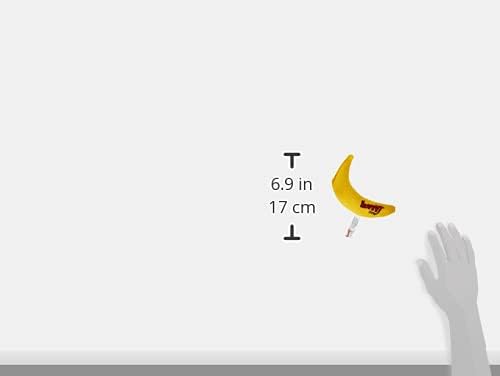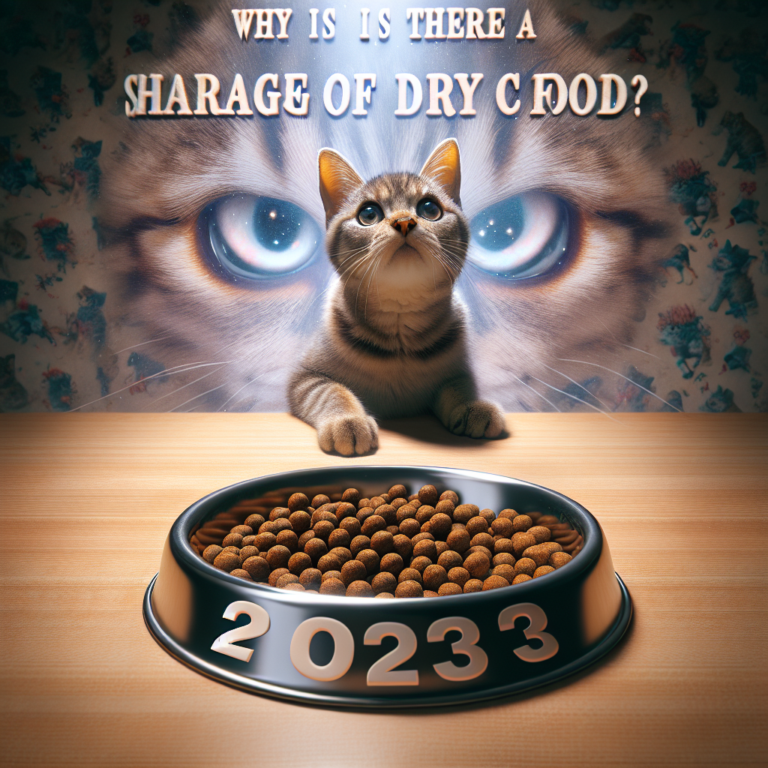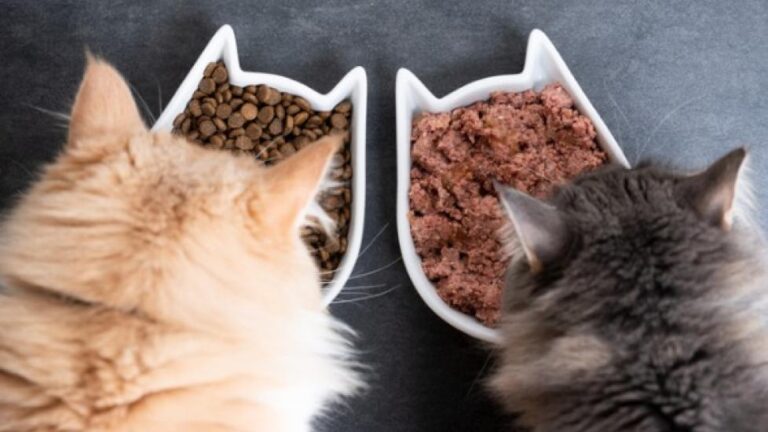How Long Can I Leave Wet Cat Food Out
So, you’ve just opened up a can of wet cat food for your furry friend, but you can’t help wonder how long it’s safe to keep it out for them to eat. We all want to make sure our kitties are well-fed and healthy, so it’s important to know the best practices when it comes to leaving wet cat food out. In this article, we’ll explore the ideal time frame for leaving wet cat food out, as well as some tips to ensure your cat’s food stays fresh and safe.

Factors Affecting the Shelf Life of Wet Cat Food
Ingredients in Wet Cat Food
The ingredients used in wet cat food play a crucial role in determining its shelf life. High-quality wet cat foods often include natural preservatives or antioxidants that help extend the product’s longevity. On the other hand, wet cat foods with a higher moisture content or perishable ingredients like fish may have a shorter shelf life. When selecting wet cat food, always read the label to ensure that it contains quality ingredients that are not prone to spoilage.
Type of Packaging
The packaging of wet cat food can significantly impact its shelf life. Canned wet cat food is often the preferred option as it provides an airtight seal, protecting it from exposure to air and potential contaminants. The airtight seal prevents bacterial growth and slows down the spoilage process, keeping the wet cat food fresh for a longer period. Alternatively, pouches or trays with easy-to-seal lids can also be effective at maintaining the freshness of wet cat food.
Storage Conditions
Proper storage conditions are vital for preserving the shelf life of wet cat food. Exposure to excessive heat, humidity, or sunlight can accelerate spoilage, resulting in decreased nutritional value and potential health risks for your cat. It is essential to store wet cat food in a cool, dry place, away from direct sunlight. Additionally, ensure that the storage area is clean and free from any contaminants that could compromise the integrity of the food.
Ideal Duration to Leave Wet Cat Food Out
Feeding Recommendations from Manufacturers
To determine the ideal duration to leave wet cat food out, it is essential to refer to the feeding recommendations provided by the manufacturers. Wet cat food manufacturers often specify the recommended serving sizes and feeding intervals for cats of different ages and sizes. These recommendations are based on the nutritional content and quality of the product, as well as considerations for a cat’s overall health. Adhering to these guidelines will help ensure that your cat receives fresh and nutritious food.
Duration for Kittens vs. Adult Cats
The ideal duration to leave wet cat food out may vary depending on whether you are feeding a kitten or an adult cat. Kittens have smaller stomachs and higher energy needs, requiring more frequent meals throughout the day. It is generally recommended to feed kittens multiple small meals and remove any uneaten food after 20-30 minutes to prevent spoilage. Adult cats, on the other hand, can typically have their wet cat food left out for up to 4 hours before it needs to be discarded.
Observing Changes in the Food
Regardless of the recommended duration, it is crucial to observe any changes in the wet cat food. Paying attention to the food’s appearance, odor, and texture can provide valuable insights into its freshness and safety. If you notice any unusual or unpleasant changes, such as a foul odor, mold growth, or an abnormal texture, it is best to discard the food immediately to prevent any potential health risks for your cat.
Risks Associated with Leaving Wet Cat Food Out
Bacterial Growth
Leaving wet cat food out for an extended period can lead to bacterial growth, especially in warm and humid conditions. Bacteria thrive in moist environments, and when wet cat food is left at room temperature for too long, it becomes an ideal breeding ground. Consumption of bacteria-contaminated wet cat food can cause digestive issues and potentially lead to more severe health complications. It is crucial to be mindful of the time the food has been left out to prevent bacterial contamination.
Spoilage and Contamination
Wet cat food, like any perishable product, is susceptible to spoilage when not stored properly. Overexposure to air, heat, and humidity can accelerate the spoilage process, altering the food’s taste, smell, and texture. Additionally, leaving wet cat food out for an extended period can increase the risk of contamination from insects, rodents, or other animals. To avoid spoilage and contamination, it is important to follow proper storage guidelines and discard any leftover wet cat food promptly.
Declining Nutritional Value
Leaving wet cat food out for too long can also result in a decline in its nutritional value. Some essential nutrients, such as certain vitamins and minerals, may deteriorate over time when exposed to air and light. As a result, your cat may not receive the optimal level of nutrition necessary for their health and wellbeing. To ensure that your cat receives the full nutritional benefits of wet cat food, it is best to adhere to the recommended feeding guidelines and avoid leaving it out for extended periods.
Storing Wet Cat Food Properly
Refrigeration vs. Room Temperature
Proper storage is key to maintaining the freshness and shelf life of wet cat food. If you plan to leave wet cat food out for a short period, it is generally safe to keep it at room temperature. However, if you anticipate leaving it out for an extended period or have leftover food, refrigeration is recommended. Refrigerating wet cat food helps slow down spoilage by keeping it cool and preventing bacterial growth. Always remember to cover the opened can or pouch tightly before storing it in the refrigerator.
Sealing and Covering
Sealing and covering wet cat food containers properly is crucial for preserving their freshness. If you open a can of wet cat food and there is leftover food, transfer it into an airtight container before refrigerating it. This prevents the food from being exposed to air, which can accelerate spoilage and affect its taste and texture. Similarly, if you are using pouches or trays, ensure that you seal them securely after each feeding to maintain the food’s freshness.
Avoiding Cross-Contamination
To prevent cross-contamination and maintain the integrity of the wet cat food, it is important to be mindful of proper food handling practices. Use clean utensils and bowls when serving wet cat food and avoid mixing it with other types of cat food or human food. Additionally, ensure that the storage area for wet cat food is clean and free from any potential contaminants, such as cleaning chemicals or other pet products.

Guidelines for Leaving Wet Cat Food Out
Limited Time Periods
When leaving wet cat food out, it is crucial to limit the duration to ensure its safety and freshness. For kittens, it is best to remove any uneaten wet cat food after 20-30 minutes to prevent spoilage and bacterial growth. Adult cats can have wet cat food left out for up to 4 hours before it should be discarded. By adhering to these time limits, you can minimize the risk of your cat consuming spoiled or contaminated food.
Monitoring Temperature
Monitoring the temperature of the room or area where the wet cat food is being left out is essential. Warm and humid environments can accelerate bacterial growth and spoilage, posing health risks for your cat. Ensure that the room temperature remains within a safe range, ideally below 70°F (21°C), to minimize the risk of bacterial contamination. If the temperature becomes too warm, it is advisable to refrigerate the wet cat food promptly.
Discarding Uneaten Food
To maintain food safety and prevent your cat from consuming spoiled wet cat food, it is important to discard any uneaten food. Leaving uneaten wet cat food out for extended periods increases the risk of bacterial growth and spoilage. By promptly removing any uneaten food and properly disposing of it, you ensure that your cat receives fresh and safe meals.
Extending the Shelf Life of Wet Cat Food
Freezing Wet Cat Food
If you have excess wet cat food that you cannot use within its recommended shelf life, freezing it can be an option to extend its longevity. Freezing is especially effective for canned wet cat food. Simply transfer the unused portion into a freezer-safe container or wrap it tightly in freezer-safe plastic wrap. When you are ready to use the frozen wet cat food, thaw it in the refrigerator overnight before feeding it to your cat. It is important to note that once thawed, wet cat food should not be refrozen.
Using Cat Food Can Covers
Cat food can covers are a convenient tool to help extend the shelf life of opened wet cat food cans. These can covers create an airtight seal, preventing the food from being exposed to air and reducing the risk of bacterial contamination. Cat food can covers are readily available at pet stores and online retailers, and they are reusable and easy to clean.
Separate Serving Portions
To minimize the risk of cross-contamination and maintain the freshness of wet cat food, it is advisable to portion it out into separate servings. This allows you to open only the necessary amount of cat food for each feeding, reducing the chance of exposing the remaining food to air and contaminants. Portioning out the wet cat food can also make it easier to store any leftover portions properly.

Signs of Spoiled Wet Cat Food
Unpleasant Odor
A strong and unpleasant odor is one of the telltale signs that wet cat food has spoiled. If you notice a foul smell coming from the wet cat food, it is best to discard it immediately. Spoiled food can be a breeding ground for bacteria and may cause digestive issues and discomfort for your cat.
Mold or Fungus Growth
The appearance of mold or fungus on wet cat food is an obvious indicator of spoilage. If you see any signs of mold or fungus growth, such as green or black spots, it is crucial to throw away the wet cat food immediately. Consumption of mold-contaminated food can lead to severe health issues for your cat.
Abnormal Texture or Color
Wet cat food that has undergone spoilage may exhibit changes in texture or color. Look out for any sliminess, discoloration, or changes in consistency. If the wet cat food feels slimy, has an unusual color, or appears to have clumps or separation, it is best to err on the side of caution and discard it.
Alternatives to Leaving Wet Cat Food Out
Scheduled Feeding Times
An alternative to leaving wet cat food out for extended periods is to establish scheduled feeding times for your cat. By feeding your cat at designated times throughout the day, you can ensure that they receive fresh meals. This method also allows you to monitor their food intake and appetite more closely, aiding in weight management and preventing overeating.
Automatic Feeders
Automatic feeders are a convenient option for providing scheduled meals to your cat, especially if you have a busy schedule or are away from home for extended periods. These feeders can be programmed to dispense precise portions of wet cat food at specific times, ensuring that your cat receives their meals at regular intervals. Some automatic feeders also come with built-in cooling mechanisms, helping to maintain the freshness of the wet cat food.
Wet and Dry Food Combination
Combining wet and dry cat food can offer a balance between convenience and freshness. By incorporating both wet and dry cat food into your cat’s diet, you provide them with variety and additional hydration from the wet food while maintaining the convenience and longer shelf life of dry food. Be sure to follow the feeding guidelines for each type of food and adjust portion sizes accordingly to meet your cat’s nutritional needs.
Special Considerations for Outdoor Cats
Wildlife Attraction
If you have outdoor cats, it is crucial to be mindful of the potential attraction that leaving wet cat food out can have on wildlife. Leaving food unattended for extended periods can attract unwanted visitors, such as rodents, raccoons, or birds. This can pose risks both to the wildlife and your outdoor cat. If you feed your cat outdoors, consider using covered feeding stations to minimize wildlife interaction and ensure that the wet cat food is consumed promptly.
Inclement Weather
Inclement weather conditions, such as extreme heat or heavy rain, can impact the shelf life and safety of wet cat food left outdoors. Excessive heat can accelerate spoilage, while rainwater can contaminate the food. It is advisable to bring wet cat food indoors during unfavorable weather conditions to maintain its freshness and prevent any potential health risks.
Providing Fresh Water
In addition to wet cat food, it is essential to provide fresh water for outdoor cats. Water can quickly become contaminated or evaporate in outdoor conditions, so it is crucial to regularly clean and replenish water bowls. Hydration is vital for the overall health and wellbeing of cats, and ensuring a constant supply of fresh water is particularly important for outdoor cats.
Consulting a Veterinarian
Individual Cat’s Health and Needs
While this article provides comprehensive information on factors affecting the shelf life of wet cat food and alternative feeding methods, it is important to consult with a veterinarian to ensure an individualized approach for your cat. Each cat has unique dietary requirements and health considerations that may influence their specific needs and feeding regimen.
Specific Dietary Recommendations
A veterinarian can provide specific dietary recommendations tailored to your cat’s age, breed, weight, and any underlying health conditions. They can guide you in selecting the most appropriate wet cat food options and advise you on the recommended duration to leave the food out based on your cat’s specific needs. Regular check-ups with a veterinarian can help ensure that your cat is receiving optimal nutrition and maintaining good overall health.







